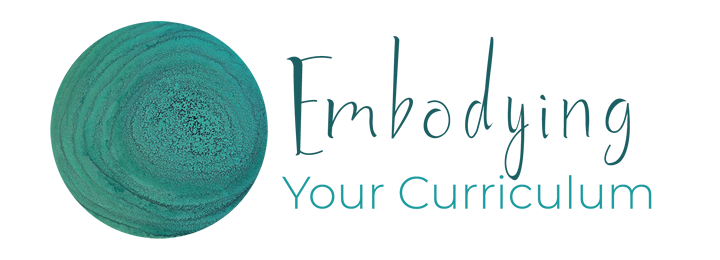The COVID pandemic has made one thing very clear for educators: Students are experiencing more mental health challenges than ever before. Activeminds.org reports that 39 percent of students in college experience a significant mental health issue and that 67 percent of people 18-24 with anxiety or depression don’t seek treatment. Mental health issues for students existed before COVID and will continue—what the COVID pandemic did was bring these issues sharply and quickly to the surface, and to show us that the post-pandemic university can no longer ignore the role that faculty play, usually without sufficient support, in student mental health.
We need to meet this escalating crisis with solutions that not only support the students, but also support the professors who are now being looked to more than ever by their students for support. Many professors are abandoning the old-school thinking that it is not part of a professor’s job to consider students’ mental health. Faculty now are actively seeking ways to help their students, but they must learn to do so in a way that protects their own mental health as well. A recent report from Boston University’s School of Public Health, the Mary Christie Foundation and the Healthy Minds Network, titled “The Role of Faculty in Student Mental Health,” offers illuminating statistics from the 1,685 faculty members at 12 colleges and universities across the United States that participated in the study, including:
- A strong majority (87%) believe that student mental health has “worsened” or “significantly worsened” during the COVID-19 pandemic.
- Almost 80% have had one-on-one phone, video, or email conversations with students in the past 12 months regarding student mental health and wellness.
- 21% of faculty agree that supporting students in mental and emotional distress has taken a toll on their own mental health.
- Only 51% of faculty reported that they have a good idea of how to recognize that a student is in emotional or mental distress.
- 73% would welcome additional professional development on the topic of student mental health.
- 61% believe it should be mandatory that all faculty receive basic training in how to respond to students experiencing mental or emotional distress.
Embodying Your Curriculum hears these calls from faculty. Our EYC Faculty Course combines trauma-informed pedagogies and mental health neuroscience to teach practical solutions that transform campus cultures and promote equity, social justice, wellness, and health. We are also very clear that tackling campus mental health issues means supporting and resourcing faculty in a profound way that gives them the tools they need, but that does not expect faculty to act as de-facto therapists. “The intention of our coursework and being able to have this kind of education and to use trauma informed practices is not to create a therapeutic container,” explains Angelica Singh, co-founder of EYC. “That’s not the point. It’s to be able to take tools that work for nervous system regulation and apply them to a classroom setting so that everybody can have a better shot at resiliency and possibilities.” Expecting professors to act as mini-therapists will only lead to increasing levels of burnout among faculty. What faculty do need is to learn how to develop nervous system regulation tools so that instead of feeling burned out from teaching, they feel effective, connected and energized.
“We want to prioritize practices of social connection in this time when we were all so distanced,” adds Anita Chari, EYC’s co-founder and assistant professor at the University of Oregon. “This is something that will continue to be fundamentally important. We can see what’s happening in our society now with the confluence of many forces historically in terms of the pandemic and racial justice struggles. And we can see these historical forces creating dysregulation in the social nervous system. We need to prioritize making our classrooms places where creating social connection in a deeper way is at the center of what we do.” It is to respond to this constellation that EYC began to coalesce the relationship between social justice education and trauma-informed pedagogy so that faculty can cultivate a deeper sense of relational contact with themselves, as well as between faculty members and their colleagues, with their students, with administrators and in the larger community of education.
So what does EYC look like in practice? Shannon Mariotti, a professor of political science at Southwestern University and EYC Faculty Course graduate, now starts her classes with a settling exercise. By introducing embodiment practices into a class that in part dealt with social change and healing justice, the “classroom became a space for thinking about the racial tensions that we’re all living through” and created the opportunity for “shared vulnerability that we all brought to this space.” Instead of feeling like she needed to be the mental health steward for her students, Professor Mariotti was instead able to be very present in her class discussions and to cultivate a space of shared connection for herself and her students. “I don’t think these things would have come to the surface so much in class if the environment hadn’t been created with vulnerability from the first day with the embodied practices that we were doing and that I was leading students through. It felt like real work to the students and to me and was probably the most rewarding teaching experience I’ve ever had and also the most difficult.”
By resourcing professors and students with the kinds of trauma-informed, social justice practices we use at EYC, we can move to a place where a social crisis doesn’t have to become a learning crisis or a mental health crisis. In that process, we can also work deeply in ways that have not been fully centered or fully prioritized within higher education to work with historical and racialized trauma. In the end, this goes far beyond the issue of mental health: issues of mental health and connection deeply impact the capacities of our institutions to be inclusive and also to deepen our conversations about race, power, and privilege. At this moment, there is no more important priority for higher education than this.






Leave A Comment